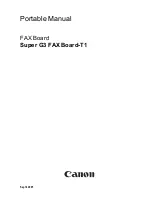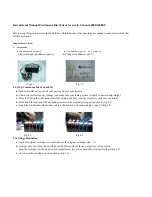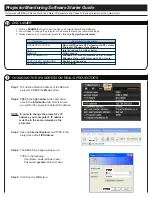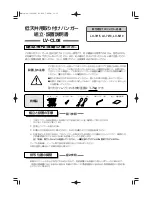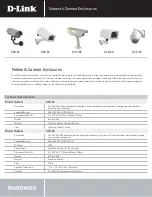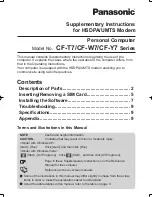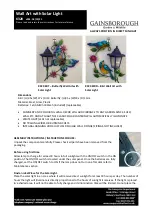
• Connect the NEUTRAL wire
from the circuit and from
the lamp (LOAD) to the white
wire on the RD‑250.
• Connect the power wire
from the circuit box (HOT)
to the black wire on the
RD‑250.
• Connect the power wire to
the lamp (LOAD) to the red
wire on the RD‑250.
• Cap the yellow wire on the
RD‑250. It is not used in
single pole applications.
4b. 3‑way wiring using two
RD‑250s:
Twist the existing wires
together with the wire leads
on the RD‑250 sensors as
indicated below. Cap them securely using wire nuts provided. (See Fig. 4b)
• Connect the green or non‑insulated (copper) GROUND wire from the circuit to
the green wire on the RD‑250.
• Connect the NEUTRAL wire from the circuit and from the lamp (LOAD) to the
white wire on the master RD‑250.
The term “master” designates the RD‑250 that connects to the load.
• Connect the NEUTRAL wire from the circuit in the other wiring box to the white
wire on the auxiliary RD‑250.
• Connect the power wire from the circuit box (HOT) to the black wire on the
auxiliary RD‑250 and to the TRAVELER 1 wire.
• Connect the TRAVELER 1 wire from the black wire of the auxiliary RD‑250 to
the black wire of the master RD‑250.
• Connect the lamp power (LOAD) to the red wire on the master RD‑250.
• Cap the red wire on the auxiliary RD‑250.
• Connect the TRAVELER 2 wire coming from the yellow wire of another RD‑250
to the yellow wire of the RD‑250 that you are wiring.
AUXILIARY RD-250
MASTER RD-250
Red
Ground
Yellow
Black
White
Red
Ground
Yellow
Black
White
Load
Traveler 1
Traveler 2
Neutral
Hot
120V/60Hz
Neutral
Fig. 4b : Reference wiring diagram, 3‑way using two RD‑250s
4c. Multi‑way wiring using one RD‑250 and up to four RH‑253s:
One RD‑250 can be connected with up to 4 RH‑253 single pole momentary wall
switches for multi‑way Manual‑ON/OFF control of one single load.
The RD‑250
must be installed in the wiring wall box that connects to the load.
Green
->
GROUND
Black
->
HOT (power
from circuit box)
White
->
NEUTRAL
Red
->
LOAD (power
to dimmable lamp)
Yellow
->
CAP (Traveler,
not used for
single pole)
Industry standard
switch cover plate
(not provided)
Fig. 4a: Sensor orientation, single pole wire
connections and wall box assembly
www.wattstopper.com









